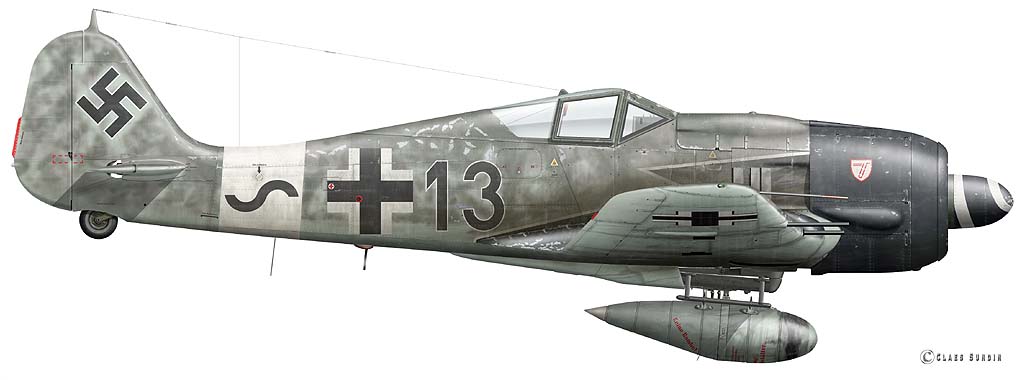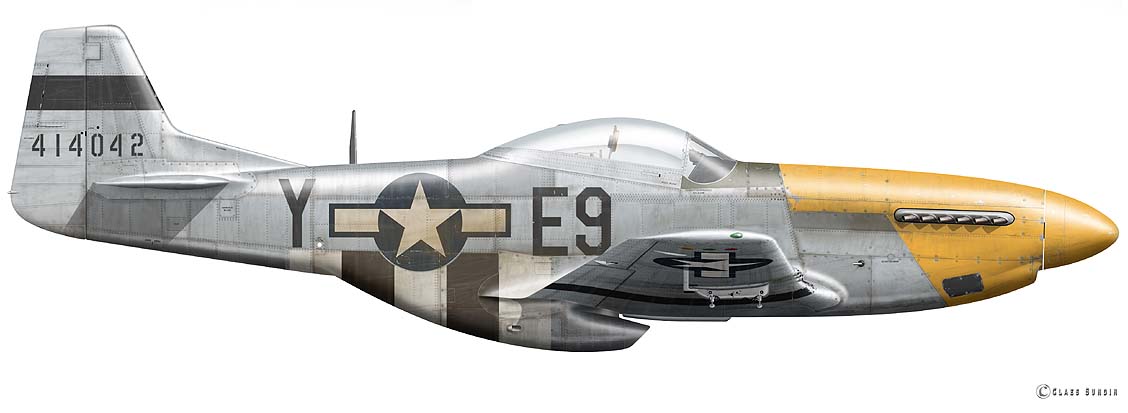


|
On 27 September 1944 315 B-24s was dispatched to hit Kassel and the Henschel aircraft plant. Escort for this mission was provided by 207 P-38s, P-47s and P-51s. This highly publicized mission is another USAAF "cover up" story. What was told to the US public was that during this mission to Kassel, the 376th FS/361st FG set an ETO record with claims of 18 enemy aircraft destroyed in the air, plus seven damaged, and three destroyed on the ground, plus one damaged. The journalists and photographs favorites this day was Lt. William R. Beyer who became an "Ace in a Day", claiming five Fw 190s destroyed. To make thing even better, the 376th FS lost just one P-51 in return, the aircraft flown by Lt. Leo H. Lamb who tragically was KIA. However what was not told in the USAAF communiques and by the journalists was that this day the 445th Bomb Group suffered the highest day loss of any 8th AF group during the war. Hacked to pieces by wave after wave of Fw 190 fighters from JG 3, JG 300 and JG 4, all equipped with the heavy armored and armed Fw 190 A-8/R2 "Sturmbock". The three Sturmgruppen had manage to approached the 445th unmolested and drove through the B-24 formation. In just a few short minutes the Kassel mission was escalating into a full-scale massacre. One of the surviving bomb crew members from the 445th remembered: "On September 27, 1944, the 445th Bomb Group flew a mission to Kassel, Germany with thirty-seven aircraft. There was a solid undercast and navigational errors were made such that a different target was hit, Göttingen about thirty miles northeast of Kassel. This put the entire group out of the bomber stream: they were on their own. Ten minutes later, about one hundred German fighters jumped the group of bombers. The entire battle took less than five minutes. We lost twenty-five crews and ships at the scene of the tragedy. In addition, two ships crash landed in France, two crashed at Manston, England, and five crashed near our base at Tibenham, England, which means that only three ships returned and landed at our base." In all the Jagdwaffe lost some 25 Focke Wulf 190 Sturmbocks this day along with four of the Bf 109 escorts. The ferocity in which the Fw 190s attacked is evident by their claims of bombers destroyed, which is rather inflated, 56 B-24's destroyed and 25 shot out of formation. What is know was that IV.Sturm/JG 3 was the first to attack and that their claims of 17 B-24's is probably correct, losing 6 aircraft to bomber return fire. II.Sturm/JG 4 came second with II.Sturm./JG 300 and the Bf 109 Gruppen coming in at a close 3rd, probably within 30 seconds to a minute of the JG 4 unit. These units probably shot down the stragglers not already shot down by JG 3, but they was also the units that were attacked by the 361 FG, with heavy losses, as the R2 version was a very un-maneuverable heavyweight and was totally unsuited for low altitude turning dogfights. The German losses this day included Staffelkapitän Othmar Zehart, one of the most experienced pilots of II./JG 4 who was lost and is still listed MIA. Amongst the relatively more experienced aces of IV./JG 3 the carnage was not so severe. One notable victim was Oberleutnant Werner Gerth the Staffelkapitän of 14./JG 3 who bailed out of his burning Fw 190 and landed uninjured. Karl Dieter Hecker of 15./JG 3, who had just registered his fifth Viermont victory, was another who bailed out although badly wounded. A similar fate befell Lt. Ernst Rex who had just shot down his first B-24. |
|
|
|
|
|
|